Kratom has become a hot topic in discussions about alternative medicine, pain relief, and addiction recovery. Originating in Southeast Asia, it is often promoted as a natural solution for conditions ranging from chronic pain to opioid withdrawal. However, its rising popularity has also sparked debates about its safety and potential risks.

What Is Kratom?
Kratom, scientifically known as Mitragyna speciosa, is a tropical tree native to Southeast Asia, primarily Thailand, Malaysia, and Indonesia. For centuries, the leaves of this plant have been used in traditional medicine to alleviate pain, boost energy, and improve mood.
Modern-day Kratom is available in various forms, including powdered leaves, capsules, and teas. The plant’s effects depend on its dosage. At lower doses, Kratom acts as a stimulant, enhancing energy and focus. At higher doses, it produces soothing effects that mimic those of opioids, such as relaxation and pain relief.
The two main active compounds in Kratom—mitragynine and 7-hydroxy mitragynine—are responsible for their effects. These alkaloids interact with receptors in the brain, leading to the substance’s widespread but controversial appeal.
Is Kratom an Opioid?
While Kratom is not technically classified as an opioid, it interacts with the same receptors in the brain as drugs like morphine and oxycodone. This interaction explains why Kratom’s effects, particularly at higher doses, are often compared to opioids.
Kratom is commonly marketed as a safer alternative to prescription painkillers, and some individuals use it to manage opioid withdrawal symptoms. However, its safety profile remains under-researched, and concerns about dependency and adverse effects persist. Unlike opioids, Kratom is not regulated by the FDA, adding to the uncertainty surrounding its use.
While it might not fit the technical definition of an opioid, the similarities in its effects and potential for dependency make Kratom a substance that requires caution and informed decision-making.
Potential Benefits of Kratom
Proponents of Kratom highlight its ability to alleviate various physical and emotional challenges. One of its most common uses is for pain relief. Kratom interacts with the brain’s receptors to reduce pain sensations, making it appealing to individuals dealing with chronic conditions like arthritis or fibromyalgia.
In addition to pain management, Kratom may enhance mood and reduce anxiety for some users. This effect is particularly prominent at moderate doses, where it provides relaxation without heavy sedation. At lower doses, Kratom’s stimulant properties can improve energy levels and focus, making it a versatile option for those seeking natural ways to manage fatigue.
Kratom has also gained attention for its potential role in easing opioid withdrawal symptoms. By mimicking some of the effects of opioids, it may help reduce cravings and withdrawal discomfort, offering a transitional solution for individuals seeking to break free from addiction.
Despite these potential benefits, it is important to remember that Kratom’s effects are mainly anecdotal. Scientific studies on its efficacy and safety remain limited, leaving many questions unanswered.
Risks and Controversies Surrounding Kratom
Kratom’s rise in popularity has brought with it significant controversy. One primary concern is its potential for dependency. Although Kratom is often marketed as a safer alternative to opioids, regular use can lead to tolerance and withdrawal symptoms, including irritability, nausea, and cravings.
Adverse health effects are another point of contention. While mild side effects like dizziness, dry mouth, and constipation are common, more severe reactions such as seizures, liver damage, and respiratory depression have been reported. These risks are particularly pronounced when Kratom is used in high doses or combined with other substances.
The lack of regulation further complicates Kratom’s safety profile. Without FDA oversight, there is no guarantee of purity or potency in Kratom products. This opens the door to contamination and mislabeling, increasing user risks.
Adding to the confusion is Kratom’s legal status, which varies widely across the globe. While it is legal in some areas, others have banned its use outright due to safety concerns. This patchwork of regulations makes it difficult for consumers to access reliable information about Kratom.
Should You Consider Kratom for Pain or Addiction Recovery?
The decision to use Kratom should be made with caution. While it may offer temporary relief for pain or withdrawal symptoms, its potential for dependency and adverse effects cannot be ignored.
For individuals struggling with chronic pain or addiction, evidence-based treatments often provide safer and more effective solutions. Therapy, medication-assisted treatment (MAT), and structured recovery programs have a proven track record in helping individuals achieve long-term wellness.
At 12 South Recovery, we offer comprehensive care tailored to your unique needs. Whether you’re managing pain, addiction, or both, our team of professionals is here to support you with safe, evidence-based solutions.
Contact Our Team
Kratom’s dual nature as both a potential remedy and a risk underscores the need for informed decision-making. While it may provide relief for some, the lack of regulation and concerns about safety make it a contentious choice for managing pain or addiction.
If you or a loved one is considering Kratom, or if you are seeking safer alternatives, contact 12 South Recovery today. Our experienced team is ready to guide you on your path to recovery with personalized, evidence-based care. Share this blog with someone who may benefit from understanding Kratom’s risks and benefits, or reach out to us to begin your journey to lasting health and recovery.


















